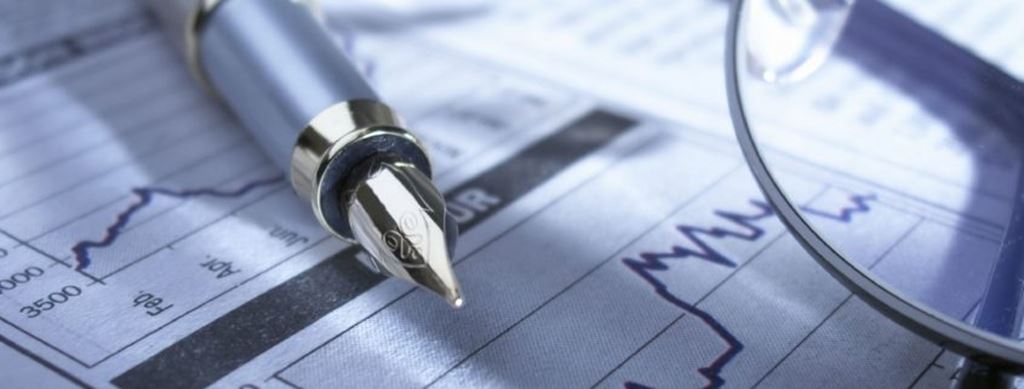Posts
Interest Rate Update – September 2015
/0 Comments/in Interest RatesCash Rate – No Change
The Reserve Bank of Australia (RBA) has announced it will maintain the official cash rate at 2.00%.
Notwithstanding the extreme market volatility last week the RBA remains comfortable to remain on the sidelines until there is significant financial data which influences the next change. The reduced Australian dollar, improvement in our employment numbers and the proposed interest rate increase in the United States is providing the RBA with comfort to defer any movement at this stage.
Interest Rate Update – August 2015
/0 Comments/in Interest RatesThe Reserve Bank of Australia (RBA) has announced it will maintain the official cash rate at 2.00%.
The decision has been influenced by a low Australian dollar (currently under 73 U.S. cents), a low inflation rate which still falls short of the RBA’s target range of 2 to 3 per cent and a relatively stable unemployment rate of 6.0 per cent.
Although the RBA’s broader economic outlook will be released in its quarterly monetary policy statement on Friday it is unlikely we will see a change to the cash rate before the end of the year.
Interest Rate Update – May 2015
/0 Comments/in Interest RatesThe Reserve Bank of Australia (RBA) has announced it will reduce the official cash rate by 0.25% to 2.00%, the lowest in recorded history.
Following last month’s RBA decision to leave the cash rate on hold with a very “dovish” tone in their issued minutes the RBA has now decided to reduce the cash rate by 0.25% to endeavour to stimulate the economy further, likely coupled with budget measures next Tuesday. Economic indicators remain mixed with a sub-par growth economy, business outlook remaining soft, inflation under control and the Australian dollar remaining too high. On a positive note quarterly inflation (2.3% YTD) remains under control within the RBA band of 2–3%. Building approvals were also up 18% over the 12 months to March 2015.
Interest Rate Update – April 2015
/0 Comments/in Interest RatesThe Reserve Bank of Australia (RBA) has announced it will maintain the official cash rate at 2.25%.
Following last month’s RBA decision to leave the cash rate as is “for the time being” it has again decided to await more financial data before it decides on further action to try to boost the domestic economy. The next quarterly inflation figures are due to be released at the end of this month together with another full round of monthly data. The RBA will then be able to digest this information in order to understand both the impact of the February rate cut and the falling iron ore price before another cash rate reduction, possibly in May.
Cash Rate Update – December 2014
/0 Comments/in Interest RatesThe Reserve Bank of Australia (RBA) has announced it will maintain the official cash rate at 2.50%, marking the first full calendar year on record without adjustment.
Australia’s economic outlook has not changed significantly over the past month and despite the slump in the dollar in November the TD Securities/Melbourne Institute monthly inflation gauge rose just 0.1%, as increases in the price of fruit and vegetables were offset by lower commodity prices.
The global economy outlook has also seen little variation over this recent period. The US economy is recovering, albeit very slowly. Chinese economic growth is modest and much of Europe continues to be of concern with high unemployment and a looming risk of deflation. The unstable situation in Eastern Ukraine together with the efforts to combat ISIS in Iraq and Syria continue to pose threats to the recovery of the world economy.
It is clear that the RBA will prefer to wait for positive signals on the domestic and global outlook before raising the cash rate, an outcome not expected until the second half of 2015.
Cash Rate Update – October 2014
/0 Comments/in Interest RatesThe Reserve Bank of Australia (RBA) has announced it will maintain the official cash rate at 2.50%.
Since the RBA’s last meeting the domestic economy has seen a decline in the Australian dollar due to a continued reduction in commodity prices and strength in the US dollar. If the lower Australian dollar is sustained it should support our non-mining exports however, notwithstanding a strong housing related market, the Australian economy overall remains soft. With inflation under control and a global economy not growing as quickly as expected the RBA will most likely remain on the sidelines for another 6 – 12 months.
Cash Rate – No Change
/0 Comments/in Interest RatesThe Reserve Bank of Australia (RBA) has announced it will maintain the official cash rate at 2.50%.
Most Economists are now forecasting this period of interest rate stability to continue until mid-2015, notwithstanding an improvement in business confidence, as measured by a recent Dun & Bradstreet survey of 800 businesses in Australia. 40% of the surveyed businesses are expecting their profit in the final quarter of 2014 to be higher than in the same period a year ago. Just 11% are expecting their profits to fall. Business in the retail, services, finance and real estate sectors are the most optimistic about the next three months whilst those in the manufacturing, construction, transport and utilities sectors still expect their profits to reduce.
Interestingly, the survey showed an increase in the number of businesses expecting prices to moderate, meaning less pressure on the RBA to increase the cash rate and supporting the Economist’s expectations of no change to the cash rate for many months.
Excellent US & Europe market update from Bankwest Business – 28th June 2013
/0 Comments/in News & MediaVolatility was crunched again overnight as the Fed released several doves to comfort the ailing bond market. I’ve put a full synopsis below courtesy of TradeTheNews.com but in brief the message was that the market has totally overreacted, policy is still data dependant and no significant shift has occurred. Rate hikes are a long way off and seen in 2015, not 2014 as the market had been eyeing.
Equities, that all look cheap compared to last month were snapped up in Europe and the US again with the Eurostoxx rising 0.66% and the S&P climbing 0.62%. Treasuries ground higher with the unwind in shorts only briefly tempered by more positive data in the form of personal incomes (+0.5% vs survey +0.2%), jobless claims down 9k to 346k and pending home sales surging 6.7% MoM. Yields on the 10yr fell 6.3bps to 2.47%.
Gold slumped another $27 or 2.2% to $1200 while oil in NY rose $1.20 or 1.25% to $96.77, copper flat.
(US) Fed’s Powell (FOMC neutral voter): Market expectations for a 2014 rate increase are out of line with the Fed’s view, it is most likely that asset purchases will continue for some time- Data is more important than dates in QE. Economy is a long way from full employment. Still a strong case for continued policy support from the Fed. strong. – There are good reasons to believe that the economy will continue to gain strength. Have seen real progress in the labor market. – Economic growth would be even better if not for fiscal drag. Tighter fiscal policy could be holding back job growth. – Surprised by how robust consumer spending has remained despite the fiscal drag. – Low inflation rate partly reflects transitory factors. – There is only mixed evidence that QE3 is still effective, but on the balance it is likely still a positive factor. – Follow up Q&A: – Chairman Bernanke signaled only a very small change in policy last week. Bernanke said explicitly that rate policy has not changed. >- If we do not realize our economic expectations, Fed will not reduce QE purchases. – rates will be low for a long time, rate hikes are well down the road. Expect a significant interval between end of QE3 (LSAP) and consideration of rate hikes. – Even if we let assets roll off the Fed balance sheet, they will roll off at a fairly quick pace. – Will not even think about rates until unemployment hits the 6.5% threshold. >- Considering the fiscal and other headwinds, Q1 GDP growth was not that bad. Q1 GDP is old data and we have seen significant improvement since then. – Not the Fed’s role to tell markets what to do or think; market volatility after Bernanke’s comments were not a surprise, but may have been a bigger reaction than expected.
Believe Bernanke was clear in his press conference, and the press conference is an appropriate forum for providing more clarity on policy.
When we get “closer to port” we can provide better guidance. – Believe the absence of Glass-Stegall regulations was only a small contributing factor to the financial crisis.- SourceTradeTheNews.com
(US) Fed Dudley (dove, voter): do take into account financial conditions but economic news supersedes market rates – Q&A- Believes Chairman Bernanke was very clear when stating outlook for policy, nothing he said should have surprised financial markets. – Baseline economic forecast could be wrong, we are not infallible. – No evidence that lower QE purchase pace would impact rates. – Fundamentals of housing market are very strong. – Inflation target is symmetric, do not want to miss on either side. Inflation expectations remains well anchored. – Higher rates are not likely to be a problem for banks.- SourceTradeTheNews.com
(US) Fed’s Lockhart (dove, FOMC non-voter): Chairman Bernanke’s comments on bond buying did not represent a very big shift in policy; the pace of bond buying depends entirely on the economy- There is no predetermined pace of reductions in the asset purchases, the stopping point is not fixed. – If inflation expectations soften, Fed would have to re-evaluate the appropriateness of policy. – Expect jobs growth trend from the last 12 months to continue. – Interest rate increases are likely to come sometime in 2015. – Reiterates if current job growth trend continues and labor force participation rate stays stable, unemployment should hit 7% by mid-2014. – Sees 2013 GDP growth of +2.0-2.5%- SourceTradeTheNews.com
Elsewhere the White House revealed that there was no front runner in the decision to replace Ben Bernanke, Yellen is often mentioned but others potentially under consideration include Larry Summers and Tim Geithner.
European leaders announced the first draft of their banking union scheme that will allow the use of the ESM, the legislation will not go through for some time but leaders are touting it as a vital step towards a more stable Euro Zone.
Revisions to the national accounts in the UK showed that in fact, the country never even entered a double dip recession let alone the triple dip that some were touting earlier this year. Sadly the historical revisions did little to help the pound, which fell another 50pts to 1.5256 last.
Contact Us
Physical Address:
Suite 11, Level 1, 255 Whitehorse Road
Balwyn Vic 3103
Postal Address:
PO Box 1200
Greythorn Vic 3104
P. (03) 9882 2500
E. teamfirstpoint@firstpointgroup.com.au
Business Hours
Latest News

 Five ways to improve your company’s credit scoreApril 12, 2024 - 10:07 am
Five ways to improve your company’s credit scoreApril 12, 2024 - 10:07 am
 Businesses hiring fewer staff, shifting to part-time arrangementsApril 12, 2024 - 9:56 am
Businesses hiring fewer staff, shifting to part-time arrangementsApril 12, 2024 - 9:56 am
 How to remain tax-compliantApril 12, 2024 - 9:49 am
How to remain tax-compliantApril 12, 2024 - 9:49 am






